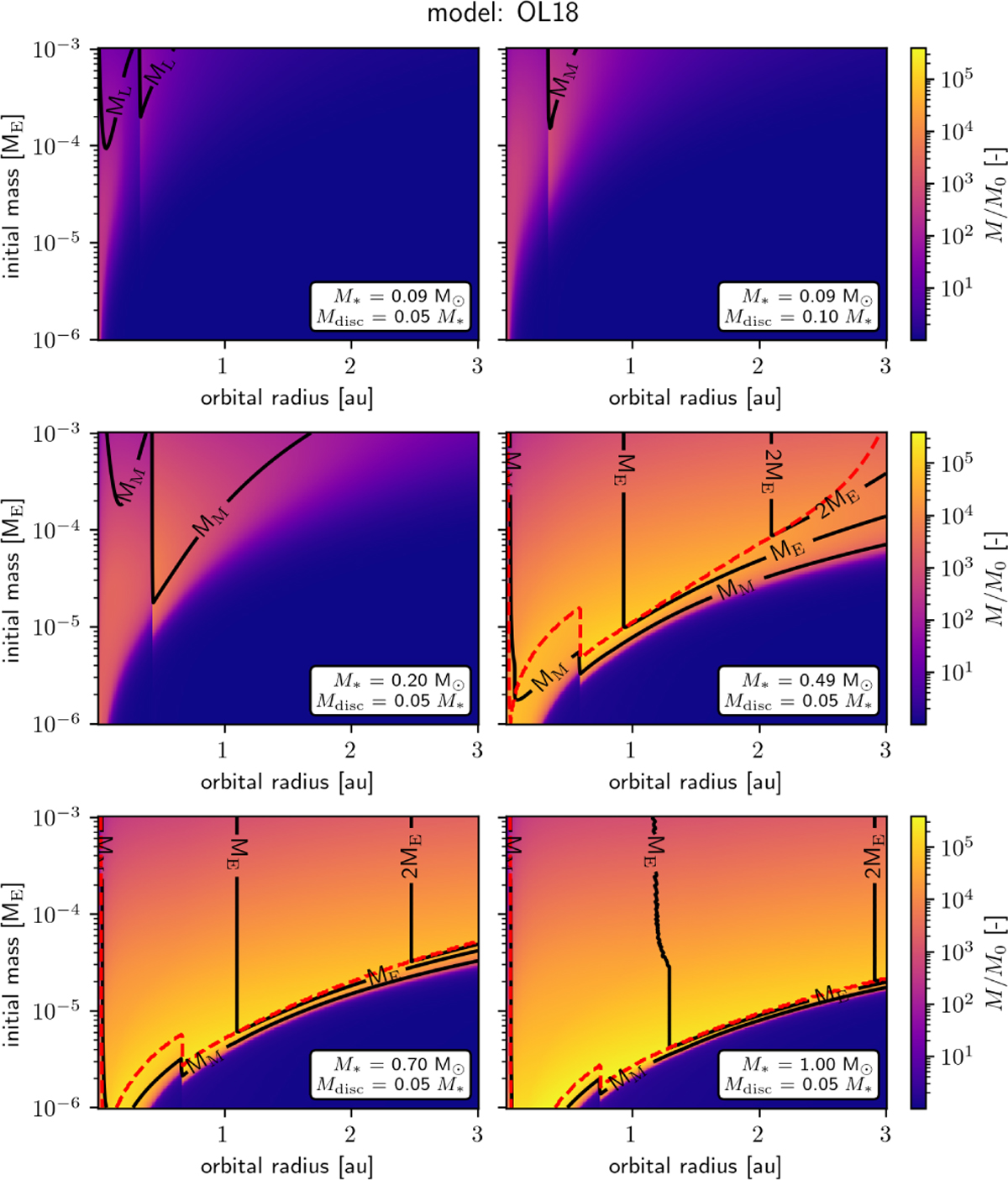Fig. 3

Download original image
Final mass divided by the initial mass of planets, calculated using only the semi-analytical PA model OL18, shown as a function of orbital radius on the x-axis and initial mass (M0) on the y-axis. The eccentricity and inclination are zero. Black contours indicate final masses higher than a Mars mass (MM), Earth mass (ME) and two Earth masses. Planets above the red dashed line have reached the local pebble isolation mass. Around 0.49, 0.70, and 1.00 M⊙ stars, PA produces Earth-mass planets in a wide range of orbital separations. Around 0.09 and 0.20 M⊙, PA does not form planets larger than a few Mars masses, even though the pebble isolation mass allows for the formation of Earth-sized planets. For 0.09 M⊙ stars, planets do not grow larger than about a lunar mass (ML) in the default disc of 5% of the stellar mass, which is why a more massive disc of 10% of the stellar mass is used for this star.
Current usage metrics show cumulative count of Article Views (full-text article views including HTML views, PDF and ePub downloads, according to the available data) and Abstracts Views on Vision4Press platform.
Data correspond to usage on the plateform after 2015. The current usage metrics is available 48-96 hours after online publication and is updated daily on week days.
Initial download of the metrics may take a while.


